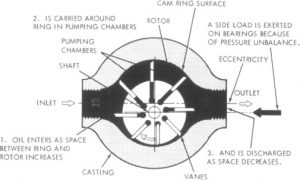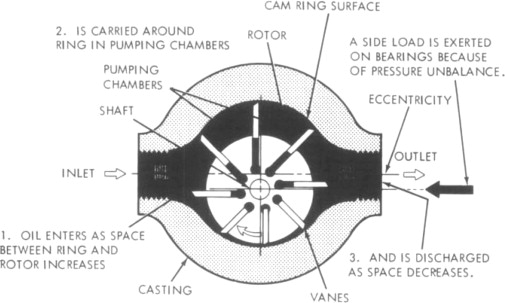Hydraulic pumps create pressure by transferring energy from a hydraulic fluid to a rotating impeller. Pressure is measured in pounds per square inch (PSI). A common application for hydraulic pumps is in the manufacturing, agricultural, mining and construction industries.
If you’re looking to buy a hydraulic pump, there are a few things you need to consider.
1, the type of hydraulic pump you need will depend on the task at hand.
2, the horsepower of the pump will be relevant to how quickly the pump can move material.
3, you’ll need to factor in the price of the pump and your budget.
4, you’ll also need to consider the size of the pump and the space it will need to operate in.
5, you’ll need to choose the right type of hydraulic fluid.
do hydraulic pumps create pressure
Hydraulic pumps create pressure in various ways. One way is by using the pump’s rotational speed to create a pressure difference. This pressure difference is then used to drive the pump.
Another way hydraulic pumps create pressure is by using a piston and cylinder system. When the piston is pushed down, it creates a vacuum in the cylinder. This vacuum then pulls up on the piston, which in turn creates a pressure difference between the air inside the cylinder and the atmosphere outside of the cylinder.
In either case, the pressure difference is then used to drive the pump.
There are a few factors to consider when buying a hydraulic pump. These include the horsepower required, the type of fluid being pumped, and the price of the pump.
Some of the most common uses for hydraulic pumps include manufacturing, agriculture, mining and construction.
The horsepower of a hydraulic pump is crucial to how quickly the pump can move material. The higher the horsepower, the faster the pump can move material.
Finally, you’ll need to factor in the price of the pump and your budget when purchasing a hydraulic pump.
There are a number of brands and types of hydraulic pumps available on the market. You’ll need to decide what type of pump is best suited for your needs.
Some of the most common types of pumps include reciprocating, rotary, and vane pumps.
Reciprocating pumps are among the most common types of pumps. They use a piston and cylinder system to create pressure.
Rotary pumps use a rotor to create pressure. This type of pump is often used in applications where high pressures are needed, such as in the manufacturing industry.
Vane pumps use a vane to create pressure. This type of pump is often used in applications where low pressures are needed, such as in water treatment plants.
There are a number of brands and types of hydraulic pumps available on the market. You’ll need to decide what type of pump is best suited for your needs.

How do hydraulic pumps create pressure?
hydraulic pumps are used to create pressure in various industries, such as construction, agricultural, mining and oil drilling. The basic principle of a hydraulic pump is that a fluid is forced through a series of pistons by a motor. This motion creates pressure in the fluid, which can be used to power various devices.
One common application of hydraulic pressure is in water supply systems. When water is forced through a pipe, it creates pressure that can be used to drive pumps. This pressure can also be used to power other devices, such as valves and tanks.
Another common use of hydraulic pressure is in mining. When a miner tries to extract heavy minerals from the ground, they need to use a lot of force. This force is often applied using hydraulic pumps. The pumps force mineral-rich water through a series of tubes, which creates pressure. This pressure can be used to break up rocks and extract valuable minerals.
Hydraulic pumps are also used in oil drilling. When a drill goes down into the ground, it needs to be able to move a lot of oil and gas. This movement is often accomplished using hydraulic pumps. The pumps create pressure that can be used to drive various devices, such as motors and valves.
The use of hydraulic pressure is widespread across many industries. It is often used to power various devices, break up rocks and extract valuable minerals.
Conclusion
Hydraulic pumps create pressure, but the amount of pressure they produce depends on a variety of factors, including the size and type of pump, the fluid being pumped, and the surrounding environment. Always be sure to read product labels and follow all safety precautions when using hydraulic pumps in order to avoid any potential injuries or accidents.
Hydraulic pumps create pressure by transferring energy from a hydraulic fluid to a rotating impeller. Pressure is measured in pounds per square inch (PSI). A common application for hydraulic pumps is in the manufacturing, agricultural, mining and construction industries.
If you’re looking to buy a hydraulic pump, there are a few things you need to consider. These include the horsepower required, the type of fluid being pumped, and the price of the pump.

Some of the most common uses for hydraulic pumps include manufacturing, agriculture, mining and construction. The horsepower of a hydraulic pump is crucial to how quickly the pump can move material. The higher the horsepower, the faster the pump can move material.
Finally, you’ll need to factor in the price of the pump and your budget when purchasing a hydraulic pump. There are a number of brands and types of hydraulic pumps available on the market. You’ll need to decide what type of pump is best suited for your needs. Some of the most common types of pumps include reciprocating, rotary, and vane pumps.

